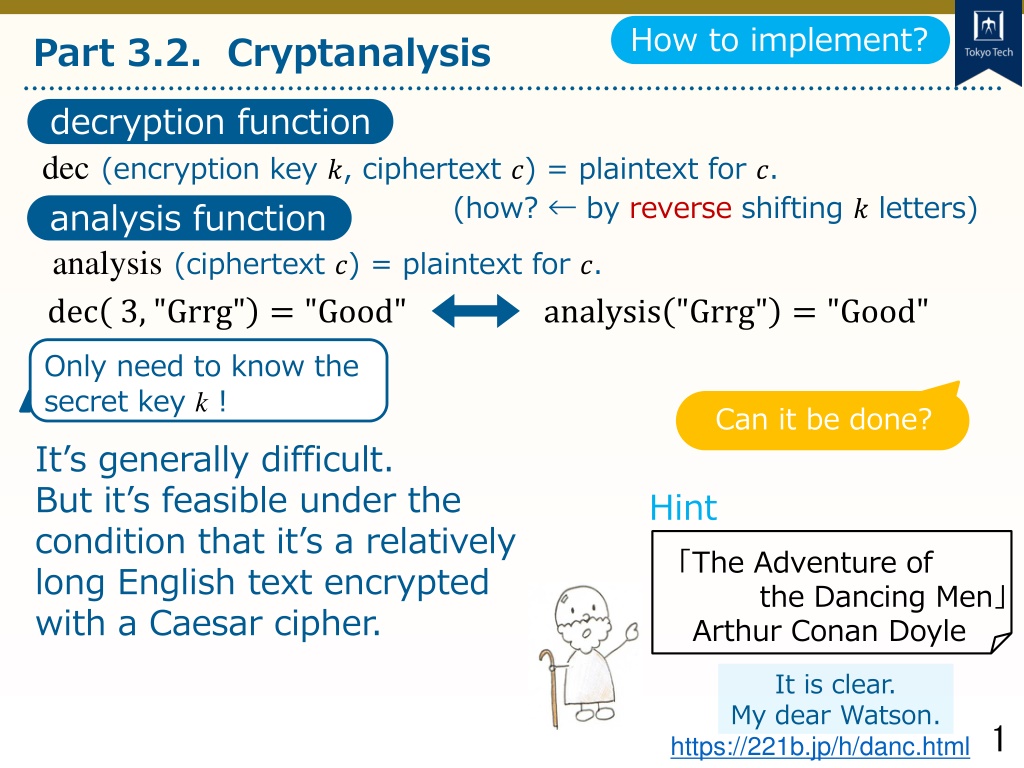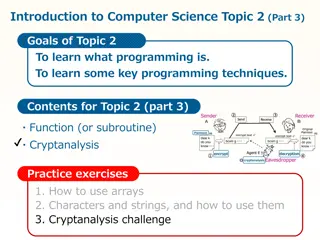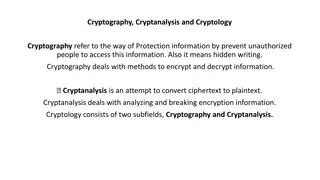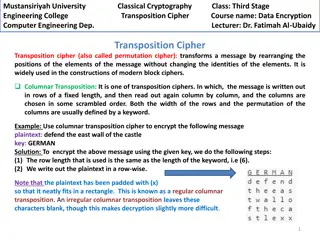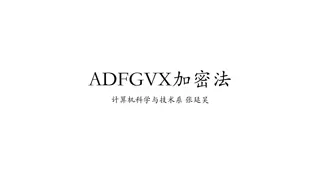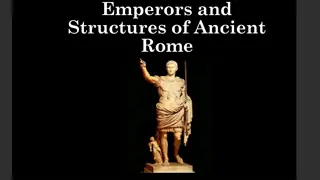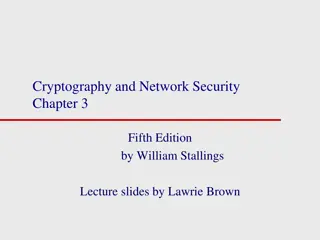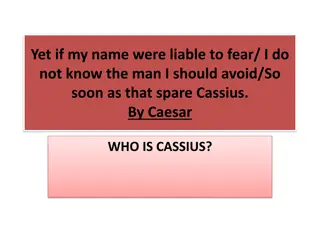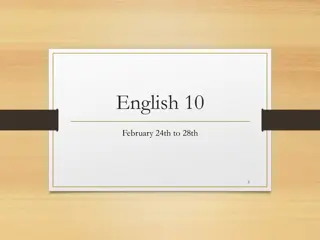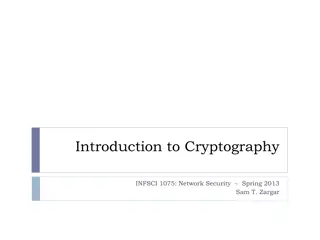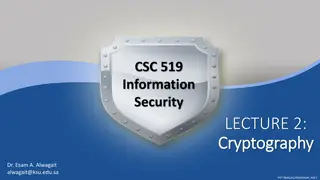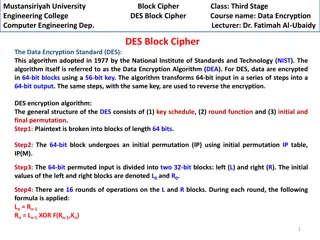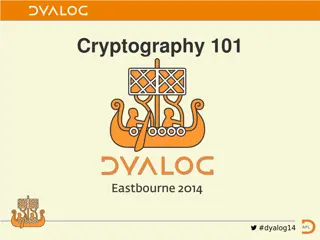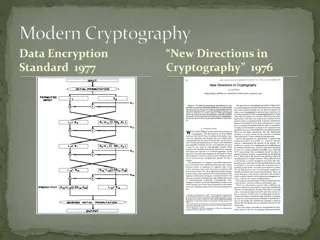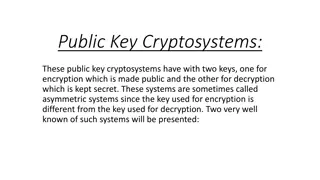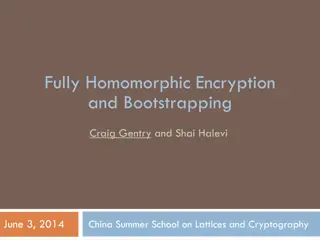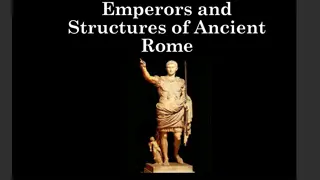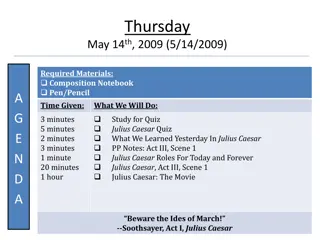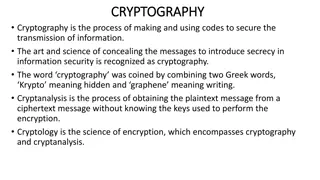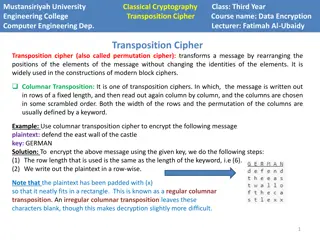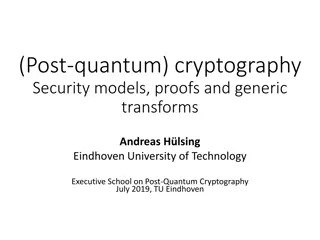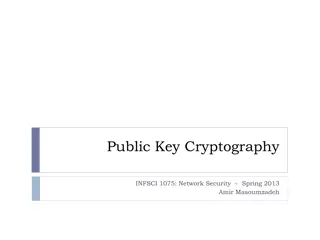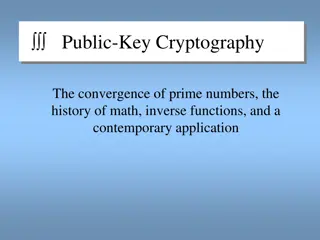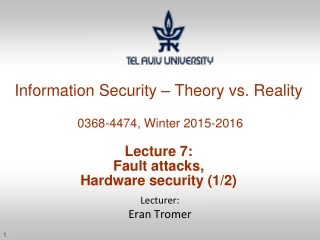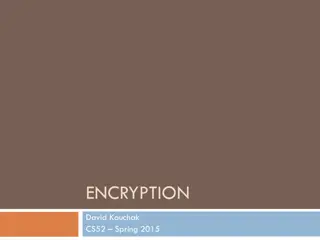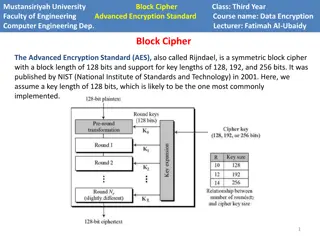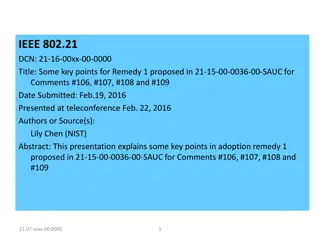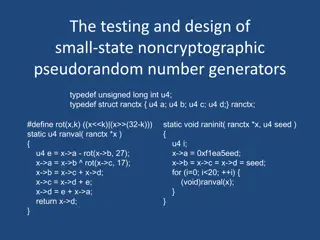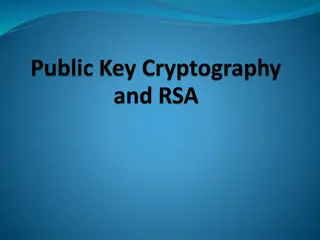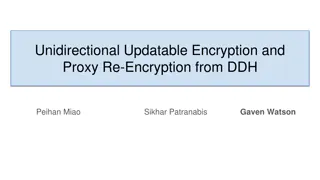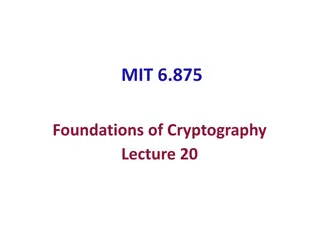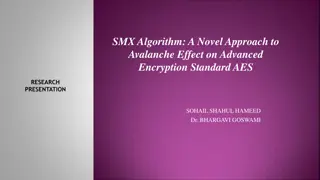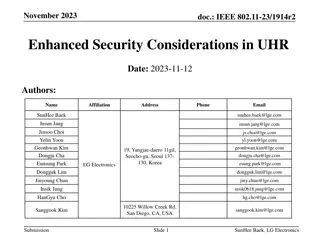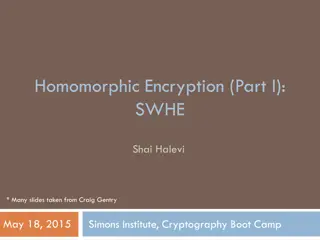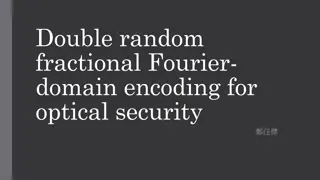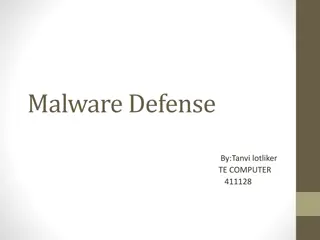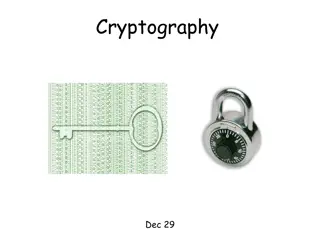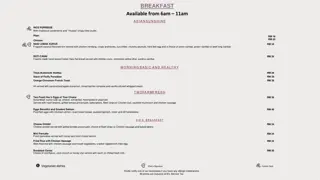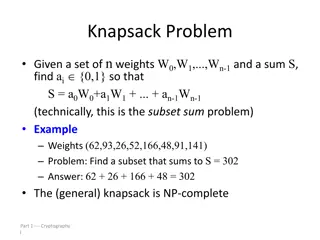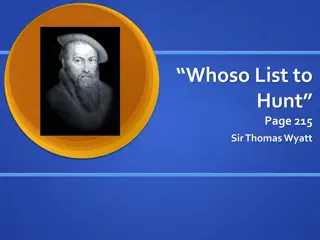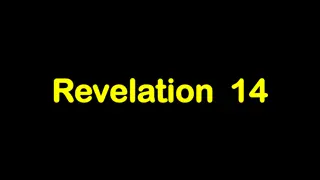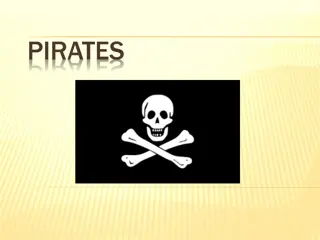Cryptanalysis and Decryption Techniques for Caesar Cipher
Learn how to decrypt Caesar cipher text using cryptanalysis techniques by analyzing letter frequencies and determining the secret key through character analysis. Explore methods to count character frequencies and find the most common letter to decipher encrypted messages.
Download Presentation

Please find below an Image/Link to download the presentation.
The content on the website is provided AS IS for your information and personal use only. It may not be sold, licensed, or shared on other websites without obtaining consent from the author. Download presentation by click this link. If you encounter any issues during the download, it is possible that the publisher has removed the file from their server.
E N D
Presentation Transcript
How to implement? Part 3.2. Cryptanalysis decryption function dec (encryption key ?, ciphertext ?) = plaintext for ?. (how? by reverse shifting ? letters) analysis function analysis (ciphertext ?) = plaintext for ?. dec 3, "Grrg" = "Good" analysis "Grrg" = "Good" Only need to know the secret key k ! It s generally difficult. But it s feasible under the condition that it s a relatively long English text encrypted with a Caesar cipher. Can it be done? Hint The Adventure of the Dancing Men Arthur Conan Doyle It is clear. My dear Watson. https://221b.jp/h/danc.html 1
How to implement? Part 3.2. Cryptanalysis decryption function dec (encryption key ?, ciphertext ?) = plaintext for ?. (how? by reverse shifting ? letters) analysis function analysis (ciphertext ?) = plaintext for ?. dec 3, "Grrg" = "Good" analysis "Grrg" = "Good" Practice exercises Only need to know the secret key k ! decrypt.rb cryptanalysis.rb def dec(k, c) Creating a plain text m def dec(k, c) Creating a plain text m return m end ###### Program ###### ciphertext = gets.chomp Compute k return m end ###### Program ###### k = 7 ciphertext = gets.chomp plaintext = dec(k, ciphertext) puts(plaintext) plaintext = dec(k, ciphertext) puts(plaintext) 2
How to implement? 1. Count char. s frequency Part 3.2. Cryptanalysis ciphertext krophv kdg ehhq vhdwhg iru vrph krxuv lq vlohqfh zlwk klv orqj, wklq edfn fxuyhg ryhu A fkhplfdo yhvvho lq zklfk kh zdv euhzlqj A sduwlfxoduob pdorgrurxv surgxfw. klv khdg zdv vxqn xsrq klv euhdvw, dqg kh orrnhg iurp pb srlqw ri ylhz olnh d vwudqjh, odqn elug, zlwk gxoo juhb soxpdjh dqg A eodfn wrs-nqrw. Count the frequency of each character type in a given ciphertext. An array freq[0] freq[25] is used to keep # of occurrences.. array freq 3
How to implement? 1. Count char. s frequency Part 3.2. Cryptanalysis count part ciphertext krophv kdg ehhq vhdwhg iru vrph krxuv lq vlohqfh zlwk klv orqj, wklq edfn fxuyhg ryhu A fkhplfdo yhvvho lq zklfk kh zdv euhzlqj A sduwlfxoduob pdorgrurxv surgxfw. klv khdg zdv vxqn xsrq klv euhdvw, dqg kh orrnhg iurp pb srlqw ri ylhz olnh d vwudqjh, odqn elug, zlwk gxoo juhb soxpdjh dqg A eodfn wrs-nqrw. # prepare code_a = 97 ciphertext = gets.chomp leng = ciphertext.length aa = ciphertext.unpack("C*") freq = Array.new(26, 0) # count freq. of each char. type for i in 0..(leng-1) dist = aa[ i ] code_a update values of freq[dist] end puts(freq) value of diff array freq It s like drawing tally marks. 4
How to implement? 2. Find the one appears most Part 3.2. Cryptanalysis krophv kdg ehhq vhdwhg iru vrph krxuv lq vlohqfh zlwk klv orqj, wklq edfn fxuyhg ryhu A fkhplfdo yhvvho lq zklfk kh zdv euhzlqj A sduwlfxoduob pdorgrurxv surgxfw. klv khdg zdv vxqn xsrq klv euhdvw, dqg kh orrnhg iurp pb srlqw ri ylhz olnh d vwudqjh, odqn elug, zlwk gxoo juhb soxpdjh dqg A eodfn wrs-nqrw. h appears 24 times, which is the most. The letter of the alphabet that appears most often in English is e. max_dist 5
How to implement? 2. Find the one appears most Part 3.2. Cryptanalysis krophv kdg ehhq vhdwhg iru vrph krxuv lq vlohqfh zlwk klv orqj, wklq edfn fxuyhg ryhu A fkhplfdo yhvvho lq zklfk kh zdv euhzlqj A sduwlfxoduob pdorgrurxv surgxfw. klv khdg zdv vxqn xsrq klv euhdvw, dqg kh orrnhg iurp pb srlqw ri ylhz olnh d vwudqjh, odqn elug, zlwk gxoo juhb soxpdjh dqg A eodfn wrs-nqrw. h appears 24 times, which is the most. a b c d e f g h i j k l m n o p q r s t u v w x y z 4 0 1 2 3 5 6 7 8 9 10 11 12 13 14 15 16 17 18 19 20 21 22 23 24 25 Value of diff 24 0 2 7 4 = 3 is shifted k = 3 max_dist It is clear. My dear Watson. Isn t it too easy? 6
How to implement? Part 3.2. Cryptanalysis decryption function dec (encryption key ?, ciphertext ?) = plaintext for ?. (how? by reverse shifting ? letters) analysis function analysis (ciphertext ?) = plaintext for ?. Only need to know the secret key k ! cryptanalysis.rb def dec(k, c) Creating a plain text m 1) Calculate the frequency of each character in the ciphertext return m end ###### Program ###### ciphertext = gets.chomp Compute k 2) Find the most-occurring character (call it max_dist) 3) Calculate k from max_dist and the dist value of character e (= 4) plaintext = dec(k, ciphertext) puts(plaintext) 7
Part 3. Summary: Function and subroutine What is a function? Difference with Ruby function = subroutine Function defines the goal of computation (=specification of computation) Subroutine defines the method of computation The program can be organized easily with subroutines One of the most basic programming techniques 8
Part 3. Summary: Cryptography Cryptography or cryptographic communication refers to communication encoded in such a way that you can t tell what the content of a communication text is even if you see it. Basic flow of cryptographic communication Cryptography is not only for communication; for example, we may use it when storing data. 9
Practice exercises CSxxx-C3_12-P (1) cryptanalysis.rb (2) 23 k max_diff 23 23 23 (3) 10
Practice exercises CSxxx-C3_12-P (1) cryptanalysis.rb (2) 23 k max_diff 23 23 23 (3) Google form CSxxx_C3_12-P https://forms.gle/qJCHdJfvEwWdVzQh8 Let s consider !! (use 45 min.) 11
